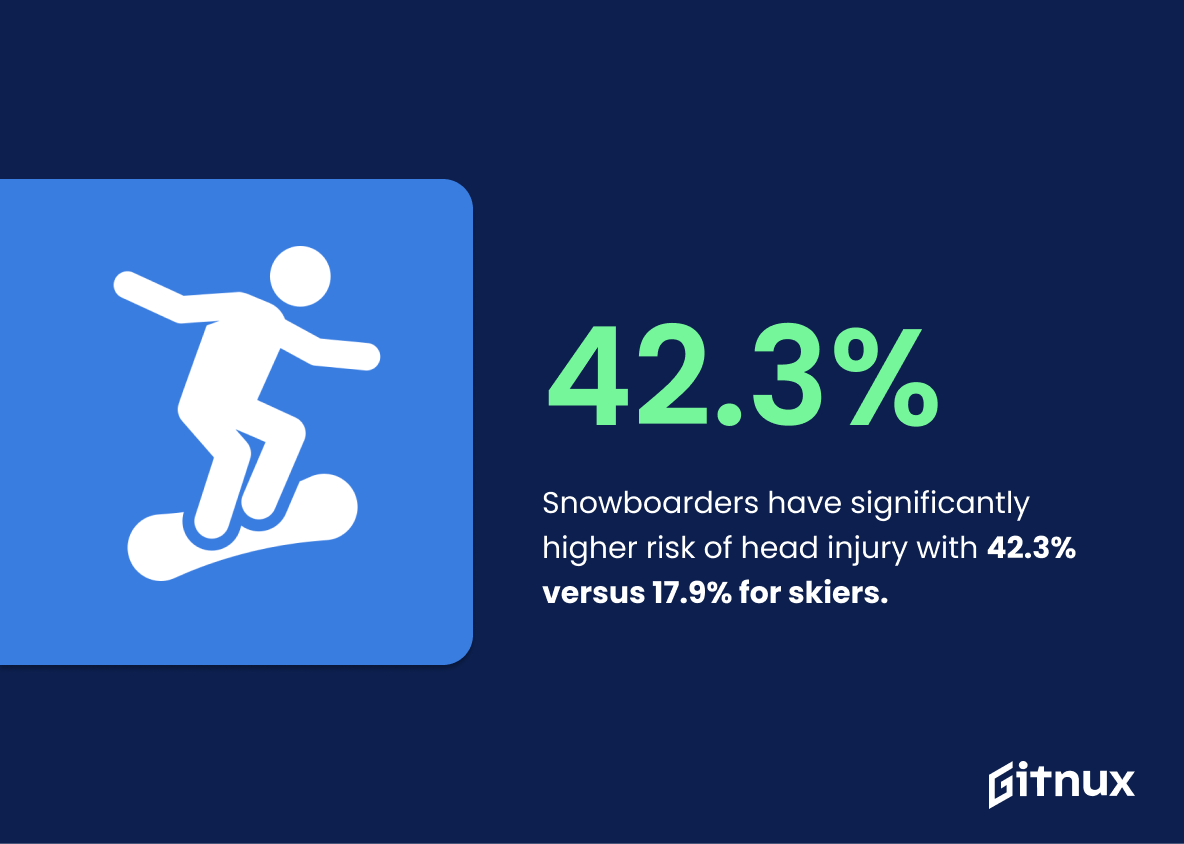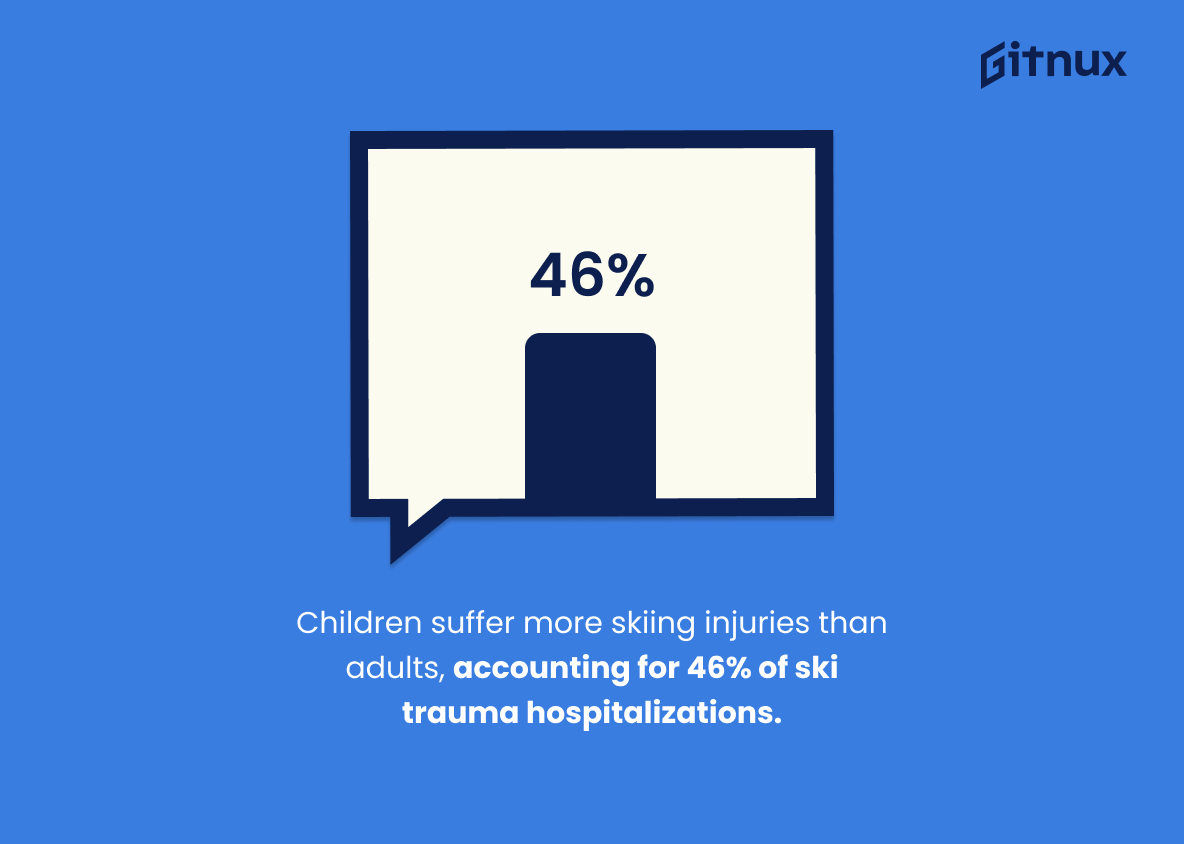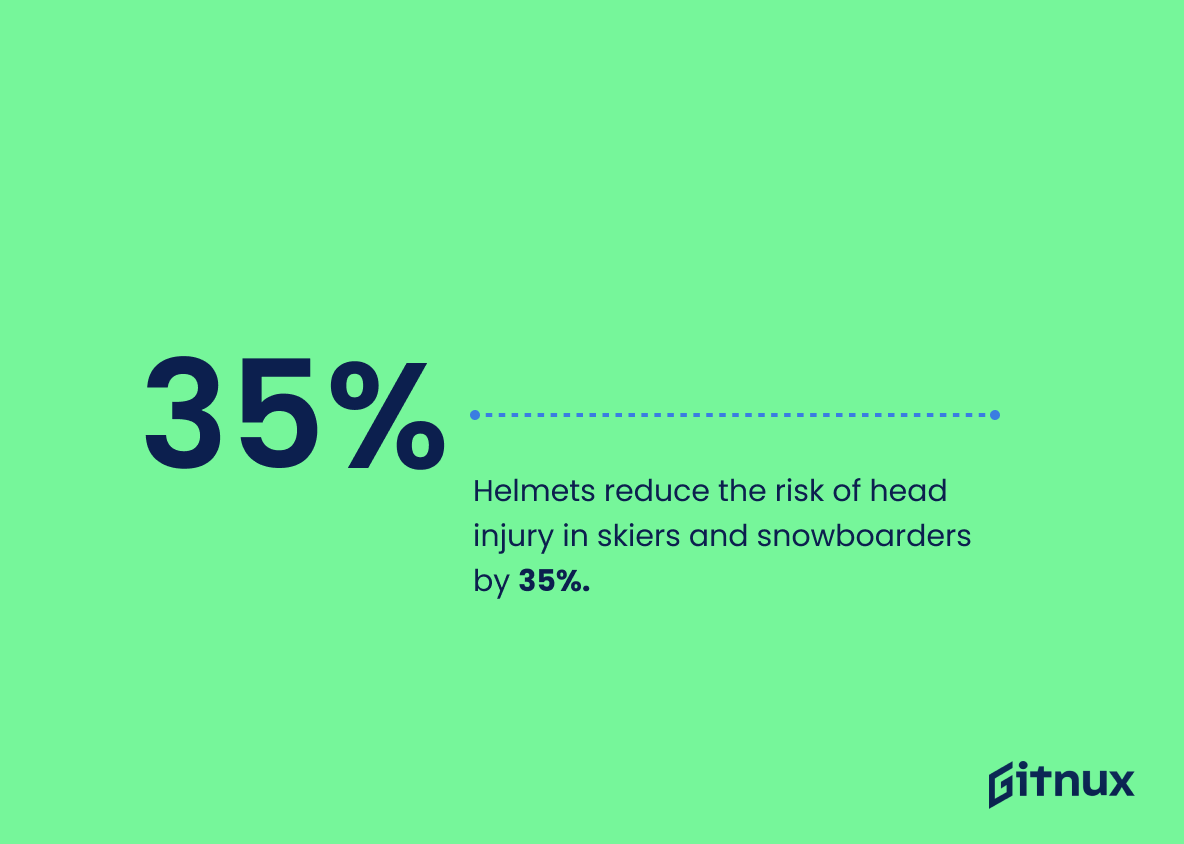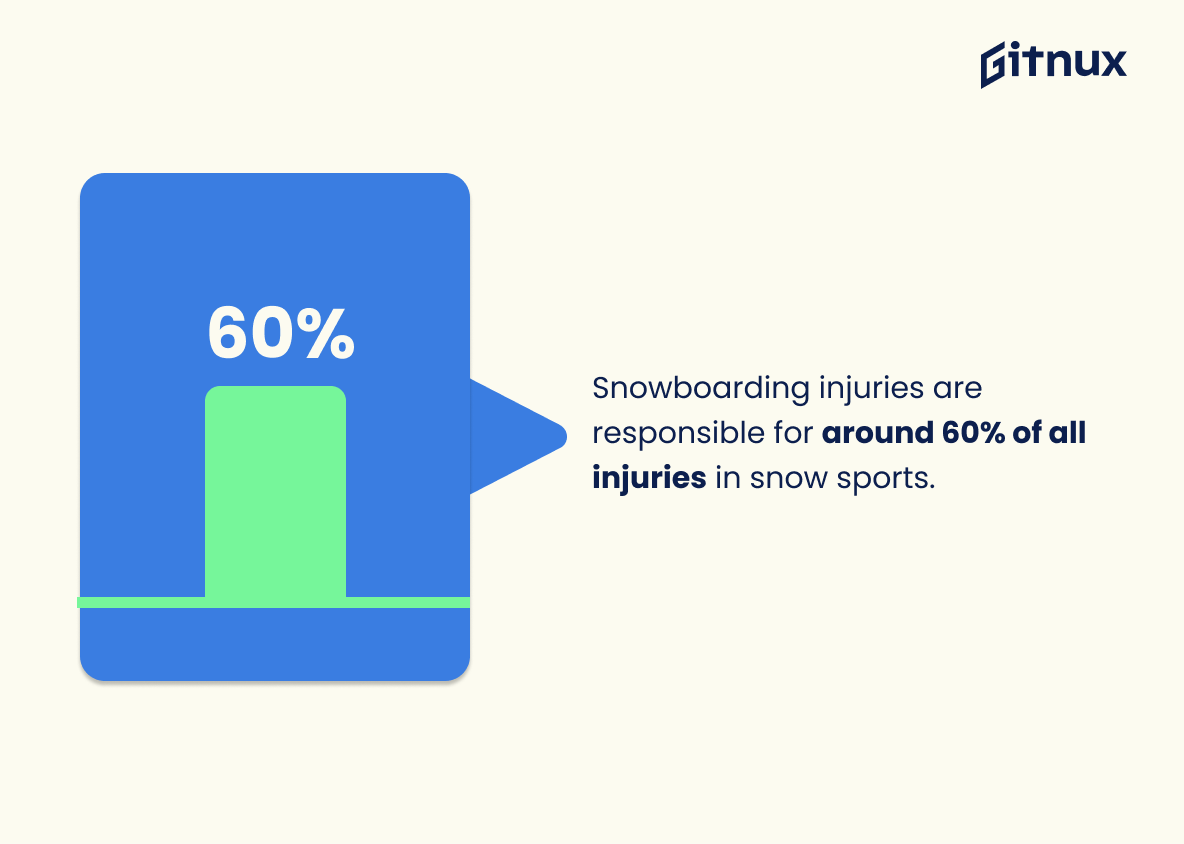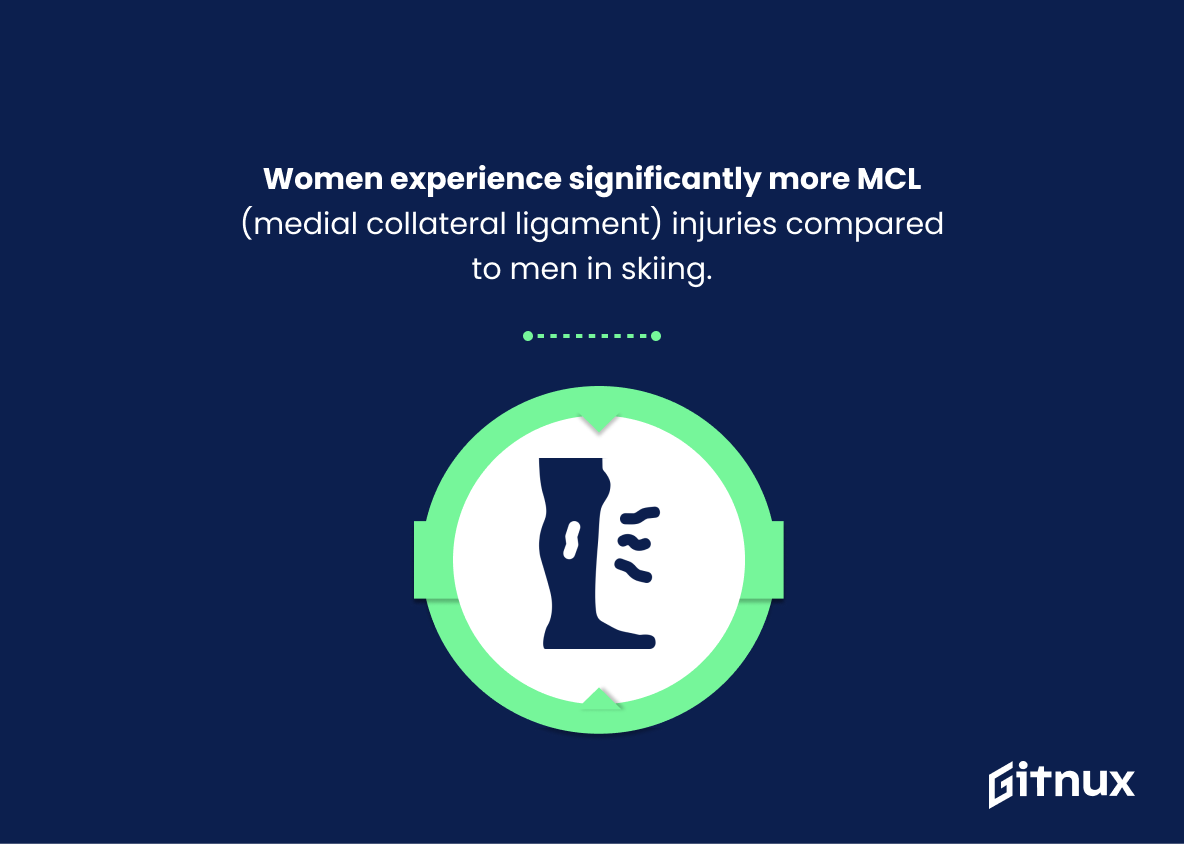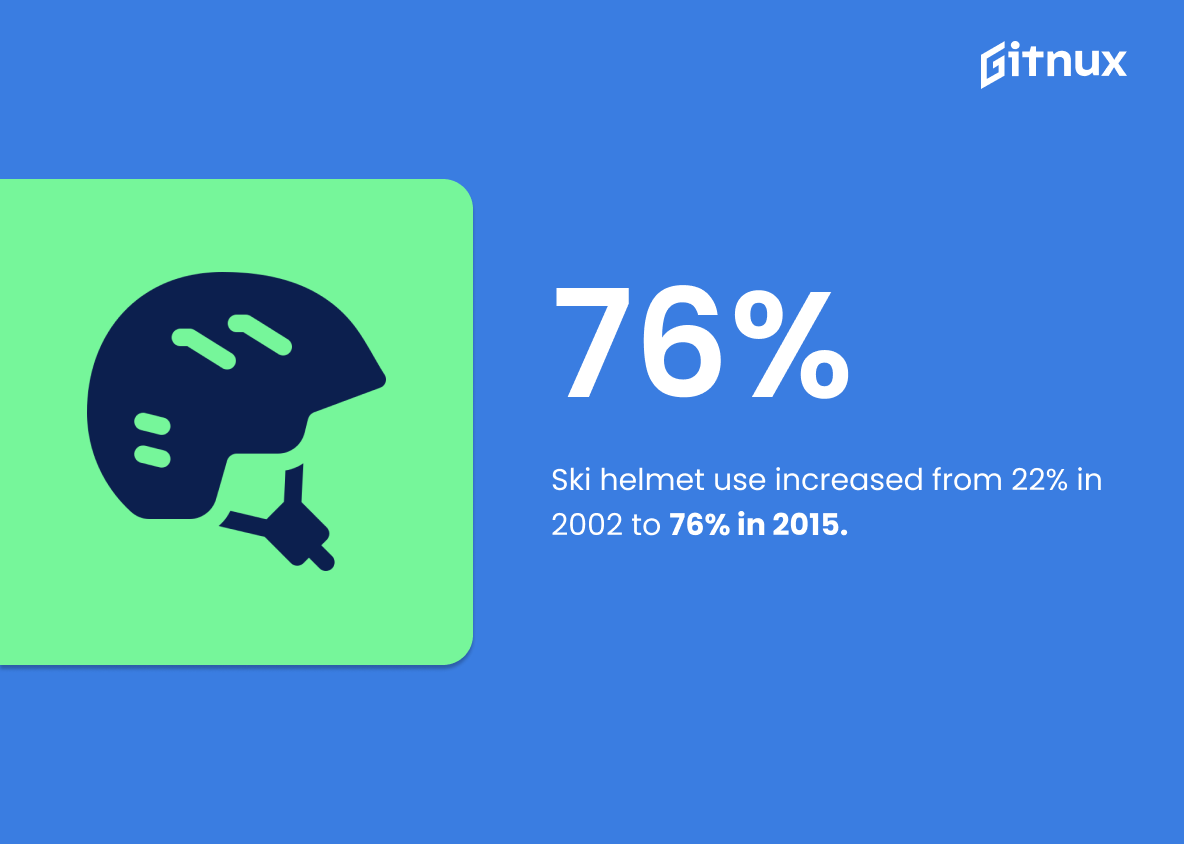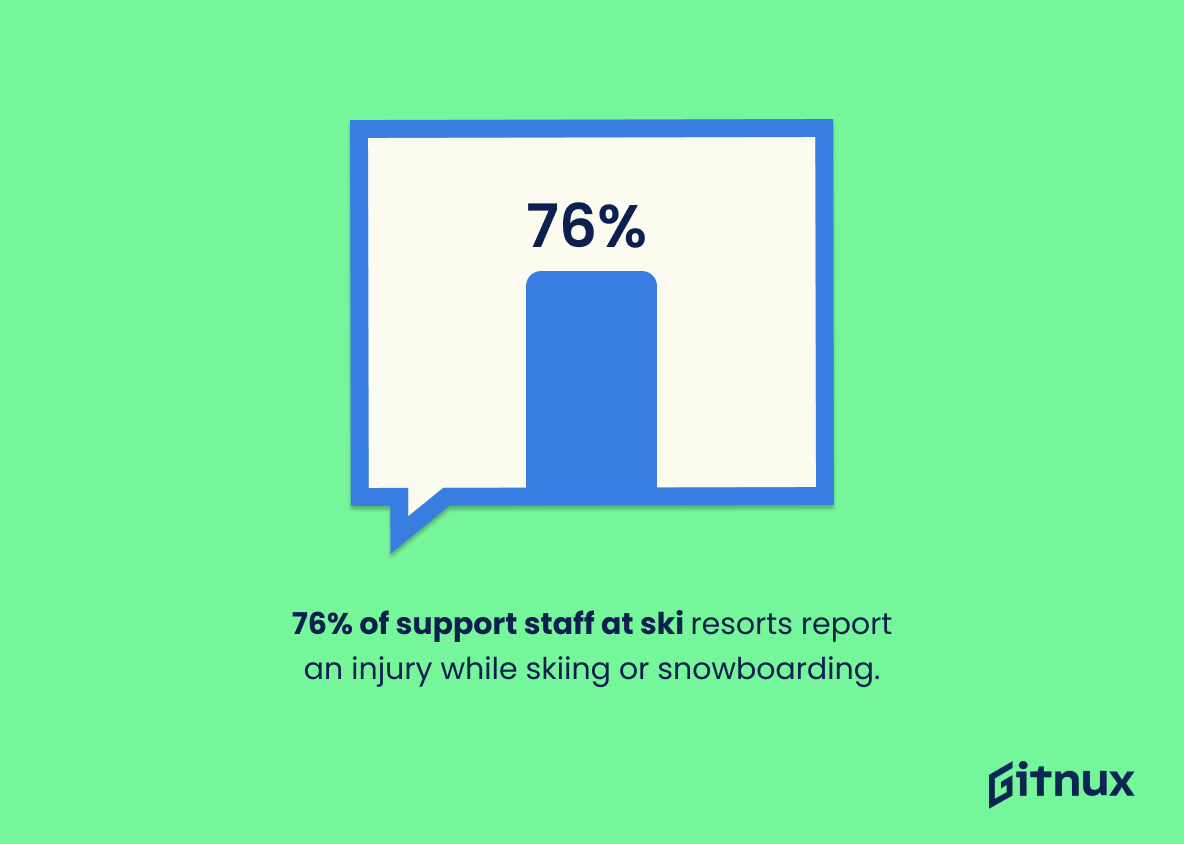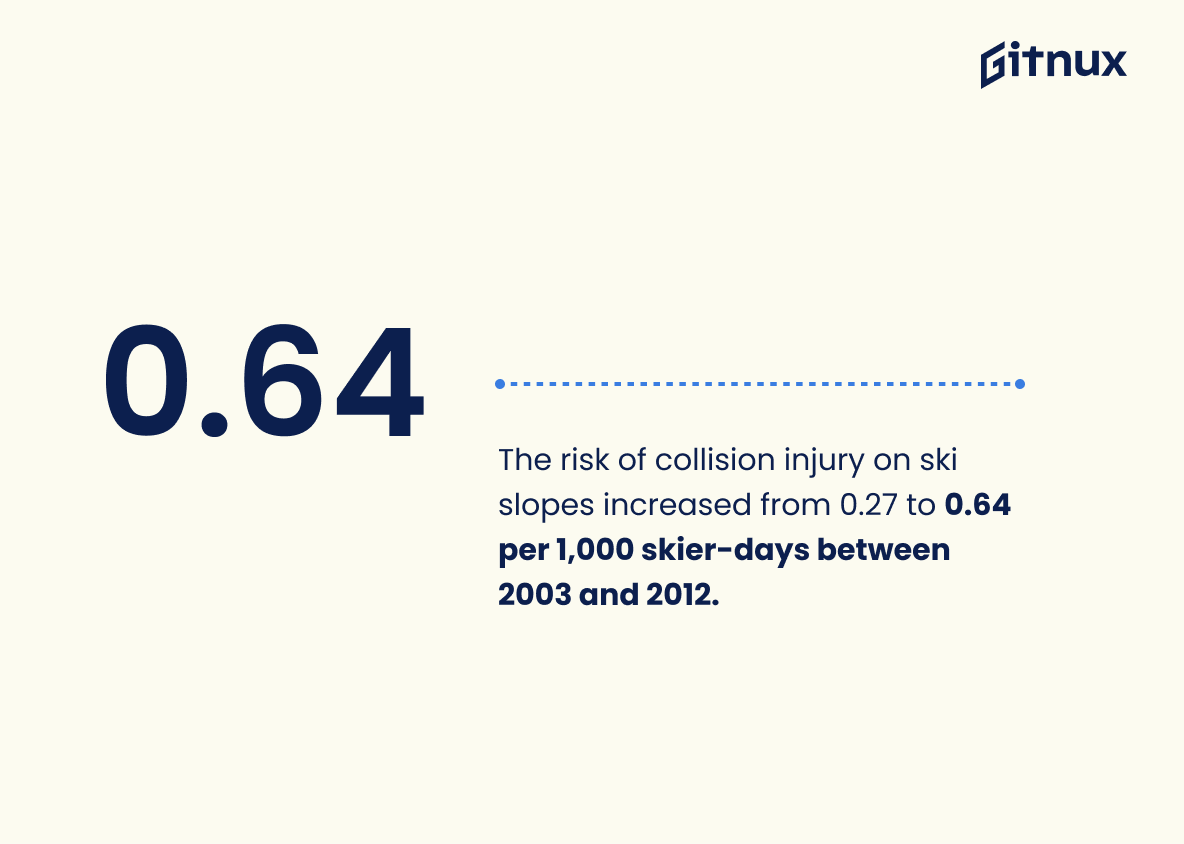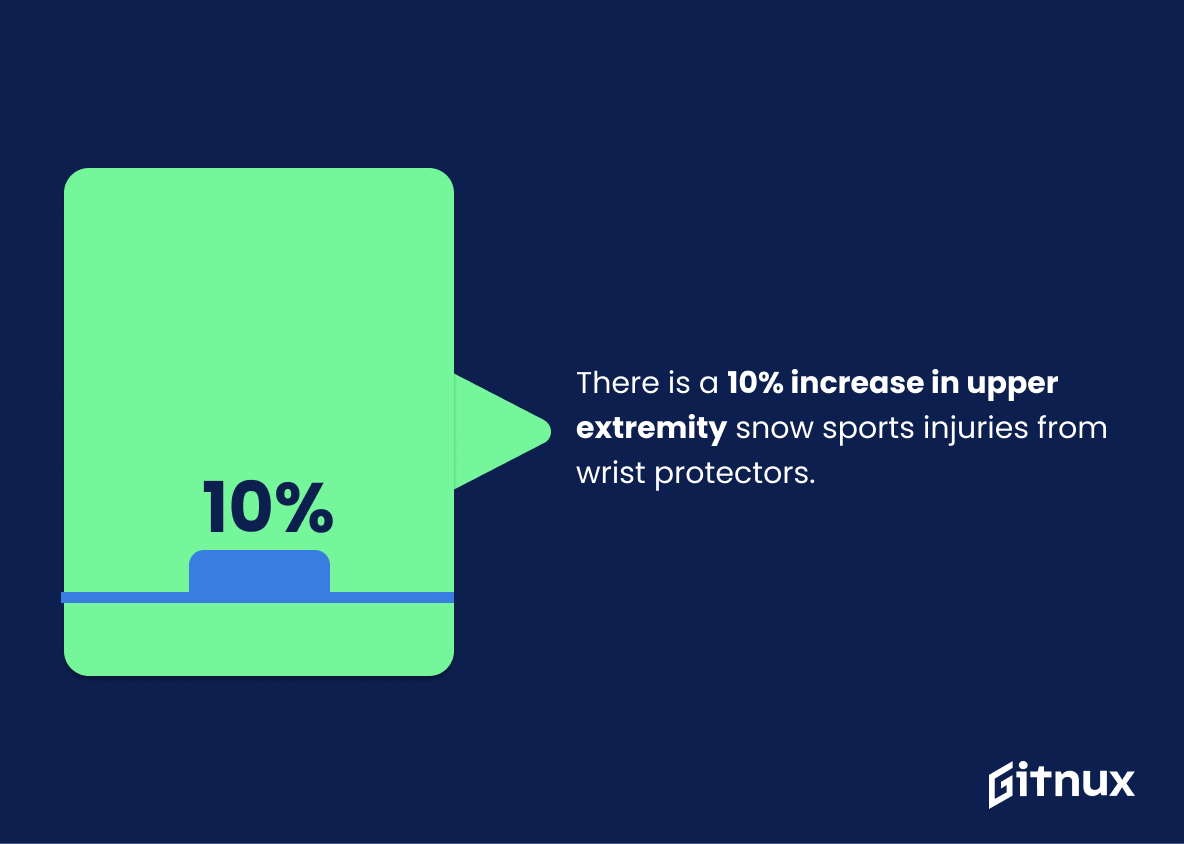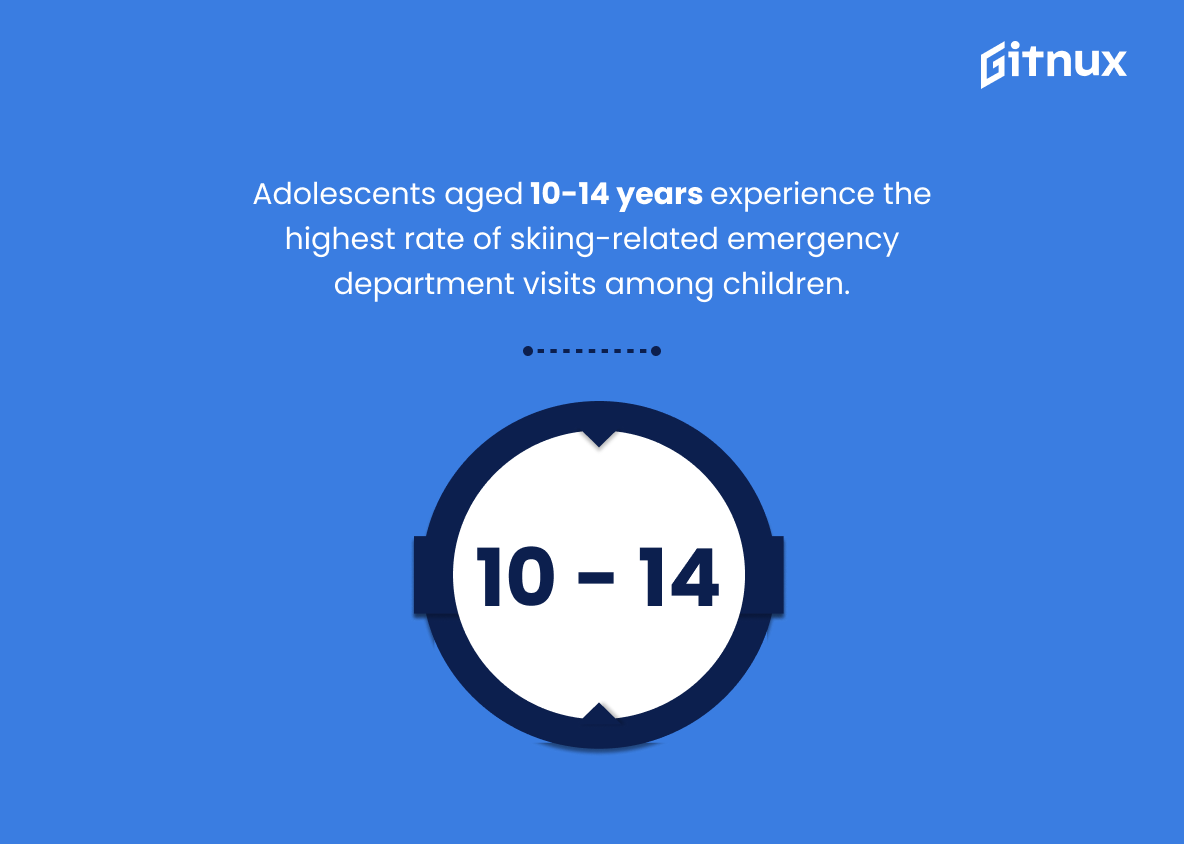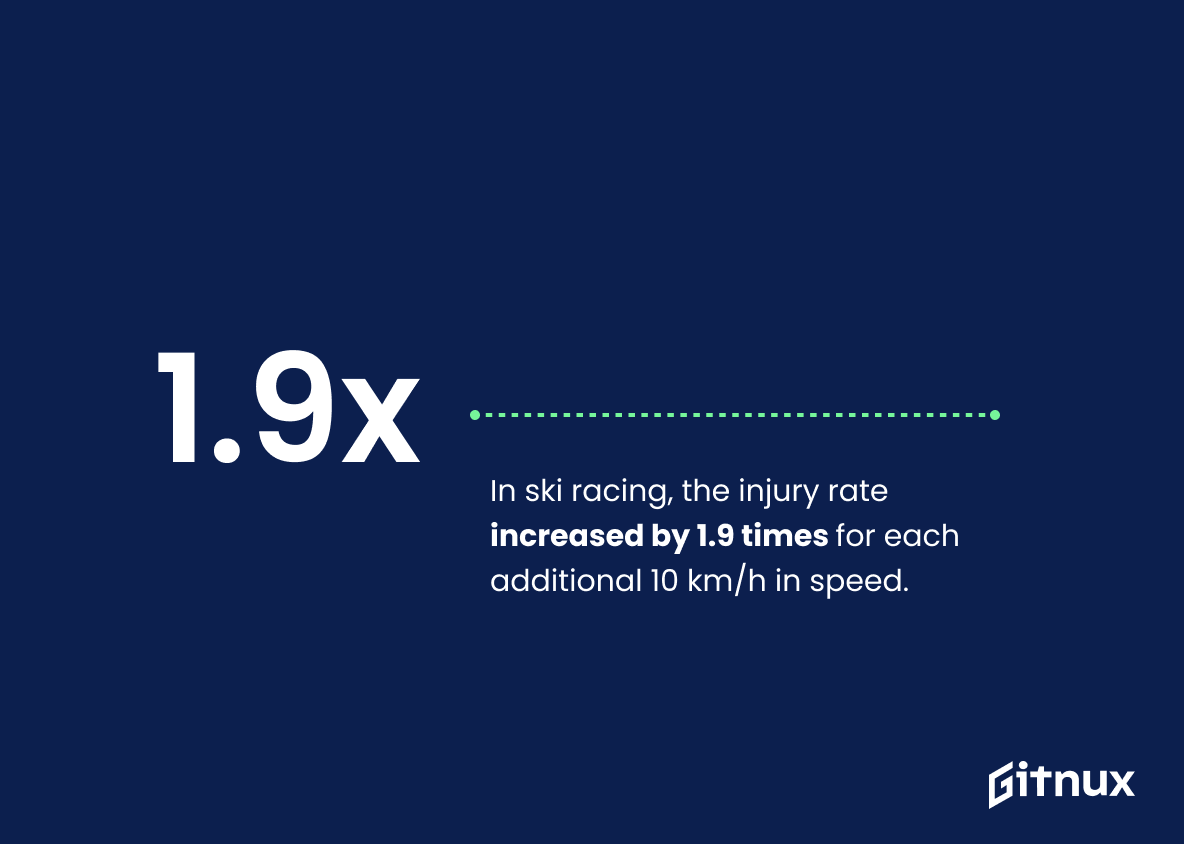Skiing is a popular winter sport enjoyed by people of all ages. Unfortunately, skiing can also be dangerous and lead to serious injuries if proper safety precautions are not taken. In this blog post, we will explore the statistics surrounding ski injury rates and risk factors for skiers and snowboarders. We’ll look at data from various sources including medical studies, research papers, government reports, and more to get an in-depth understanding of ski injury trends over time as well as which groups are most vulnerable to these types of injuries. By examining this information closely we can gain insight into how best to protect ourselves while enjoying our favorite winter activities.
This statistic is a crucial indicator of the safety of Alpine skiing, providing insight into the likelihood of sustaining an injury while participating in the sport. It is an important factor to consider when discussing ski injury statistics, as it can help inform skiers of the potential risks associated with the activity.
Skiing injuries have decreased by 50% since the 1970s.
This statistic is a testament to the progress made in ski safety over the past few decades. It shows that the efforts to reduce ski injuries have been successful, and that skiing is becoming a safer activity. This is an important point to make in a blog post about ski injury statistics, as it provides a positive outlook on the future of skiing.
Ski Injury Statistics Overview
Snowboarders have significantly higher risk of head injury with 42.3% versus 17.9% for skiers.
This statistic is a stark reminder of the importance of taking proper safety precautions when snowboarding. With more than double the risk of head injury compared to skiers, it is clear that snowboarders must take extra care to protect themselves while on the slopes.
Children suffer more skiing injuries than adults, accounting for 46% of ski trauma hospitalizations.
This statistic is a stark reminder that children are particularly vulnerable to ski-related injuries, making up a disproportionate amount of ski trauma hospitalizations. It is a call to action for parents and ski resorts to take extra precautions to ensure the safety of young skiers.
Helmets reduce the risk of head injury in skiers and snowboarders by 35%.
This statistic is a powerful reminder of the importance of wearing a helmet while skiing or snowboarding. It highlights the fact that helmets can drastically reduce the risk of head injury, making them an essential piece of safety equipment for anyone hitting the slopes.
Snowboarding injuries are responsible for around 60% of all injuries in snow sports.
This statistic is a stark reminder of the importance of taking proper safety precautions when engaging in snow sports. It highlights the fact that snowboarding is a particularly hazardous activity, and that extra care should be taken to ensure that snowboarders are properly equipped and trained to reduce the risk of injury. Furthermore, it serves as a warning to those who may be considering taking up snowboarding, that it is not a sport to be taken lightly.
Women experience significantly more MCL (medial collateral ligament) injuries compared to men in skiing.
This statistic is a stark reminder of the importance of taking extra precautions when skiing for women. It highlights the need for women to be aware of the increased risk of MCL injuries and to take the necessary steps to protect themselves while on the slopes. It also serves as a reminder to ski instructors and ski resorts to be mindful of the gender differences in skiing injuries and to provide the necessary resources and support to ensure that women are safe while skiing.
Ski helmet use increased from 22% in 2002 to 76% in 2015.
This statistic is a testament to the importance of ski helmet use, as it demonstrates the dramatic increase in helmet use over the past 13 years. It is clear that more and more skiers are recognizing the importance of wearing a helmet while skiing, and this is reflected in the significant increase in helmet use. This is an encouraging sign for those concerned with ski injury statistics, as helmets are an important safety measure that can help reduce the risk of serious injury.
76% of support staff at ski resorts report an injury while skiing or snowboarding.
This statistic is a stark reminder of the risks associated with skiing and snowboarding. It highlights the importance of taking safety precautions while on the slopes, as even those who are experienced in the sport can be injured. It also serves as a warning to those who are new to skiing and snowboarding, as they may not be aware of the potential dangers. Ultimately, this statistic serves as a reminder that skiing and snowboarding can be a dangerous activity, and that safety should always be a priority.
The risk of collision injury on ski slopes increased from 0.27 to 0.64 per 1,000 skier-days between 2003 and 2012.
This statistic is a stark reminder of the dangers of skiing, showing that the risk of collision injury on ski slopes has more than doubled in the past decade. It serves as a warning to skiers to be extra vigilant and take all necessary precautions when on the slopes.
There is a 10% increase in upper extremity snow sports injuries from wrist protectors.
This statistic is significant in the context of ski injury statistics because it demonstrates the effectiveness of wrist protectors in reducing the risk of upper extremity snow sports injuries. It highlights the importance of wearing wrist protectors when participating in snow sports, as it can help to reduce the risk of injury.
Adolescents aged 10-14 years experience the highest rate of skiing-related emergency department visits among children.
This statistic is a stark reminder that skiing-related injuries are a serious issue among young people. It highlights the need for parents and guardians to be extra vigilant when it comes to their children’s safety on the slopes, and to ensure that they are properly equipped and trained to ski safely.
54% of injuries in skier-cross racing are caused by jumps.
This statistic is a crucial insight into the dangers of skier-cross racing, as it highlights the fact that jumps are a major source of injury. Knowing this, athletes and coaches can take steps to reduce the risk of injury by ensuring that jumps are built and maintained to the highest safety standards. Additionally, athletes can be more mindful of their technique when approaching and landing jumps, as this can help to reduce the risk of injury.
Snowsport athletes with a previous ACL injury are 10 times more likely to get another ACL injury.
This statistic is a stark reminder of the importance of taking preventative measures when it comes to ski injuries. It highlights the fact that those with a previous ACL injury are at a much higher risk of sustaining another, and should take extra care to ensure they are properly protected and prepared for the slopes.
In ski racing, the injury rate increased by 1.9 times for each additional 10 km/h in speed.
This statistic is a stark reminder of the dangers of skiing at higher speeds. It highlights the importance of taking safety precautions and being aware of the risks associated with skiing at faster speeds. It serves as a warning to skiers that they should be mindful of their speed and take the necessary steps to protect themselves from injury.
For ski beginners, there is a 28% higher knee injury risk when skiing less than 10 days per year.
This statistic is a stark reminder of the importance of skiing regularly to reduce the risk of knee injury. It highlights the fact that even if you are a beginner, skiing less than 10 days a year can significantly increase your risk of knee injury. This is an important point to consider when planning a ski trip, as it could mean the difference between a safe and enjoyable experience, or a painful and potentially dangerous one.
Conclusion
Skiing is a popular winter sport that can be enjoyed by people of all ages and skill levels. However, it is important to understand the risks associated with skiing in order to stay safe on the slopes. According to statistics from various sources, alpine skiing has an injury rate of 2 injuries per 1,000 skier days; knee injuries are the most common type of ski injury accounting for 35-40% of all injuries; since 1970s there has been a 50% decrease in ski related injuries; 44 injuries occur per 10,000 skier visits; snowboarders have significantly higher risk (42.3%) than skiers (17.9%) when it comes to head injury risk; 95% wrist fractures are caused by falling onto an outstretched hand while skiing or snowboarding ; children suffer more skiing/snowboarding related hospitalizations compared adults at 46%; helmets reduce head injury risk by 35%; 15%-20% spinal injures due aerial maneuvers during skiing/snowboarding activities respectively and 60 %of overall snow sports related injures belong to Snowboarders . Additionally , women experience significantly more MCL(medial collateral ligament)injuries compared men in Skiing activity , 76 % helmet use increased from 22 % 2002 -2015 among Skiers &Snow boarder’s also 76 % support staff at Ski resorts report Injury while Skiing /Snow boarding . The Risk Of Collision Injuries On Slopes Increased From 0:27 To 0:64 Per 1000 Skier Days Between 2003 And 2012 Also There Is A 10 Percent Increase In Upper Extremity Snow Sports Related Injures With Wrist Protectors Adolescents aged between 10-14 years experienced highest Rate Of Emergency Department Visits Among Children 54 percent Of Injureis Occur During Skicross Racing Due Jumps Snowsport Athletes With Previous ACL Injury Are Ten Times More Likely To Get Another ACL Injury While For Beginners 28 Percent Higher Knee Injury Risk When They Have Less Than10 Days Experience Per Year Lastly It Was Found That For Every Additional Speed Increase By 10 kmph The Rate Of Ski Racing Related Injury Increases By 1:9 times Respectively
Overall these statistics demonstrate that although safety measures such as wearing helmets and using protective gear can help reduce your chances of getting injured while participating in snowsports activities like Alpine skiing or Snowboarding they cannot completely eliminate them so caution should always be taken when engaging any kind of physical activity outdoors especially those involving high speeds or heights which could lead serious consequences if not done properly
References
0. – https://www.orthoinfo.aaos.org
1. – https://www.healio.com
2. – https://www.ncbi.nlm.nih.gov
3. – https://www.link.springer.com
4. – https://www.chop.edu
5. – https://www.bjsm.bmj.com
6. – https://www.journals.sfu.ca
7. – https://www.pubmed.ncbi.nlm.nih.gov
8. – https://www.nsaa.org
